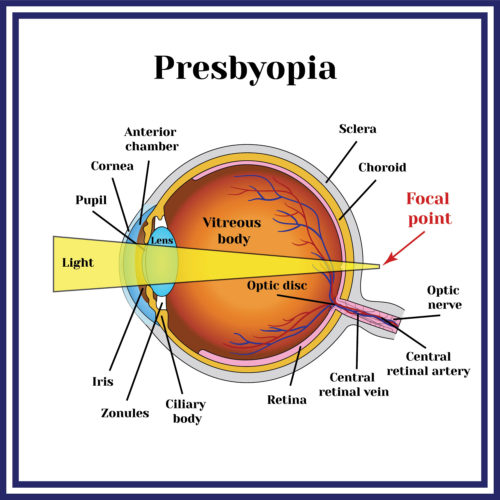How is Presbyopia treated?
Reading glasses : only used for seeing up close
Bifocals: glasses for far away and up close (line or round edge separating the different distances).
Trifocals: glasses for far away, intermediate, and up close distances (two lines separating the different distances).
Progressive addition lenses (PALs): no line multifocal, glasses gradually transition from distance vision to up close (provides clarity at multiple distances).
Multifocal contact lenses: add power for reading integrated into the lens.
Monovision contact lenses: single vision lenses (no multifocal), one corrected for far away, the other for near.
Modified monovision contact lenses: one eye corrected for distance, the other eye corrected with a multifocal lens.2
Refractive surgery: usually LASIK or PRK, surgeon corrects one eye for distance and the other corrected for near (monovision).
Cataract surgery: multifocal (add power included) or monovision (one eye corrected for far away, the other for near) intra-ocular implants (IOLs).
Corneal inlays: implant into the cornea (clear portion of the front of the eye) to improve up close vision in patients with presbyopia. 3



